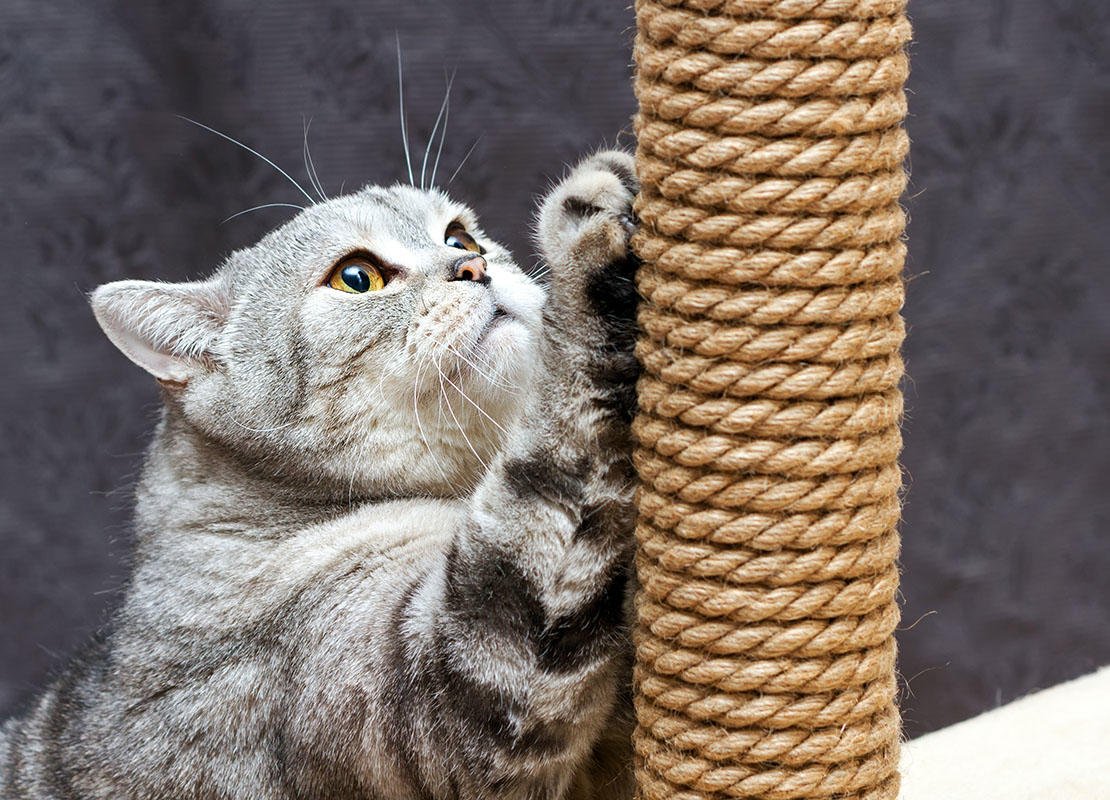how to keep your cat's claws off your furniture: tips for cat parents
Author: PawPots Team
 29 Feb 2024
29 Feb 2024
 4 min
4 min Oh, the joys of cat ownership! Our furry little friends bring so much love and laughter into our lives, but they also bring their natural instincts – like scratching. It's a bit of a bummer when that beautiful sofa or cherished family heirloom becomes the target of their claw-sharpening sessions. But fear not, while we can't completely stop our kitties from scratching (it's just part of being a cat, after all), we can definitely take steps to protect our furniture and keep everyone happy.
Understanding Your Cat's Scratching Instincts
Before we dive into solutions, let's explore why cats destroy our sofas in the first place:
Maintaining Claw Health
Scratching helps kitties shed the dead outer layer of their claws, keeping them sharp and healthy. It's a crucial part of their grooming routine and ensures their claws are ready for climbing, hunting, and self-defense.
Territorial Marking
Cats have scent glands in their paws, and scratching leaves behind their unique scent, marking their territory. This behavior is a way for them to communicate with other cats or pets and establish their presence in their environment.
Emotional Well-being
Scratching is not just a physical activity; it's also a way for cats to relieve stress and feel secure. It provides a sense of comfort and can be a form of self-expression for our feline companions.
Seeking Attention
Sometimes, cats scratch to get your attention, especially if they're feeling neglected. It's their way of saying, "Hey, I'm here, and I need some love!"
GET FREE VET HELP FOR YOUR PET CAT
Tips to Save Your Furniture from Cat Scratches
Kittens start scratching young, at around 8 weeks old, so to prevent any furniture damage, it's smart for cat owners to be prepared beforehand.
Here are some effective strategies to protect your furniture:
Invest in a Quality Scratching Post
Provide a tall, sturdy scratching post for your cat, preferably near their favorite scratching spots. This will give them a dedicated space to satisfy their scratching urges without damaging your furniture.
Consider Claw Protectors
Nail caps or soft paw protectors can be a stylish and humane solution to prevent furniture damage. These small caps fit over your cat's claws, preventing them from causing harm to your belongings.
Use Scratch Deterrent Spray
A natural scratch deterrent spray can discourage your cat from scratching unwanted areas. These sprays often contain scents that are unappealing to cats, redirecting their scratching behavior to more appropriate places.
Make Furniture Less Attractive for Scratching
Use throws, covers, or double-sided tape to make your furniture less appealing for scratching. Creating a less satisfying scratching experience will encourage your cat to seek out their designated scratching post instead.
Avoid Declawing
Declawing is cruel and harmful, and it can lead to behavioral issues. So never resort to that option, instead, focus on positive reinforcement and training. Reward your cat with treats and praise when they use their scratching post, reinforcing good behavior.
Creating a Scratch-Friendly Environment for Your Cat
Provide Variety: Offer different types of scratching surfaces to keep your cat entertained. Cats enjoy variety, and having multiple scratching options can prevent them from getting bored and turning to your furniture.
Encourage Playtime: Regular play sessions can help reduce the urge to scratch furniture. Engaging your cat in interactive play with toys and puzzles can provide an outlet for their energy and satisfy their hunting instincts.
Trim Claws Regularly: Keeping your cat's claws trimmed can minimize the damage from scratching. Regular nail trims can help keep their claws at a manageable length, reducing the need for excessive scratching.
Reward Good Behavior: Use treats and praise to encourage your cat to use their scratching post. Positive reinforcement is a powerful tool in training your cat and promoting desirable behaviors.
Conclusion: A Happy Home for You and Your Cat
By understanding your cat's natural behaviors and providing appropriate outlets for their scratching instincts, you can maintain a beautiful home and a happy, healthy cat. Remember, a little bit of effort and the right strategies can go a long way in preventing furniture damage.
NUTRITIOUS WHOLESOME MEAL FOR CATS

Give Back The Love
Show your love to your pets with our high-quality, delicious and healthy meals! Show your love to your pets with our high-
quality, delicious and
healthy meals!




